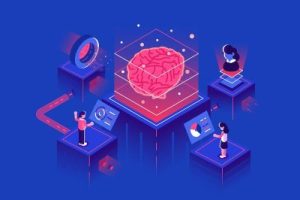
Citizen experience is a key priority across government. Agencies are taking a new look at citizens as customers and simplifying how they deliver services. At no time is that simplification more important than at times of crisis. The government provides critical support to citizens impacted by natural disasters, public health emergencies, terrorism, and economic insecurity. There are some incredible examples of how government is applying technology to meet the needs of vulnerable populations.
Supporting Homeless Populations
Austin, TX is using the Homeless Emergency Management (HEM) Tracking and Prioritization Tool as part of its larger efforts to understand and support the city's homeless population. Field staff use the tool to capture information about homeless encampments that includes factors related to health, safety, and impacts on infrastructure, property, and environmental health. This data is collated into a score that helps prioritize areas for intervention.
Before this tool, departments across the city were collecting different information and had no uniform way to evaluate it. The HEM Tool applies a citywide lens to encampment response, enabling prioritization and resource deployment to those that present the biggest risks, supports consistent encampment data capture, and improves citywide understanding of needs, risk and trends. Continue reading

 The
The  Machine Learning (ML) and other aspects of Artificial Intelligence (AI) are becoming a critical part of government modernization plans. The fear that "machines will replace people" has largely disappeared. In fact, people see the benefit that ML provides for human workers. ML technology allows machines to do what they are best at - fast computation of large data sets - freeing up humans to do what they do best - analyzing and making sense of the data produced.
Machine Learning (ML) and other aspects of Artificial Intelligence (AI) are becoming a critical part of government modernization plans. The fear that "machines will replace people" has largely disappeared. In fact, people see the benefit that ML provides for human workers. ML technology allows machines to do what they are best at - fast computation of large data sets - freeing up humans to do what they do best - analyzing and making sense of the data produced. In an era where we're often asked to "do more with less," government is finding the need to do more with more when it comes to data. There is no lack of data within government systems. The challenge has always been getting the right access to it and then making it usable. Data can go a long way in helping meet key government-wide goals of better customer experience and increased equity in government service. There are a number of interesting applications of Big Data solutions across government to illustrate the power of data to make a difference.
In an era where we're often asked to "do more with less," government is finding the need to do more with more when it comes to data. There is no lack of data within government systems. The challenge has always been getting the right access to it and then making it usable. Data can go a long way in helping meet key government-wide goals of better customer experience and increased equity in government service. There are a number of interesting applications of Big Data solutions across government to illustrate the power of data to make a difference. Agile is not a technology but rather
Agile is not a technology but rather 
